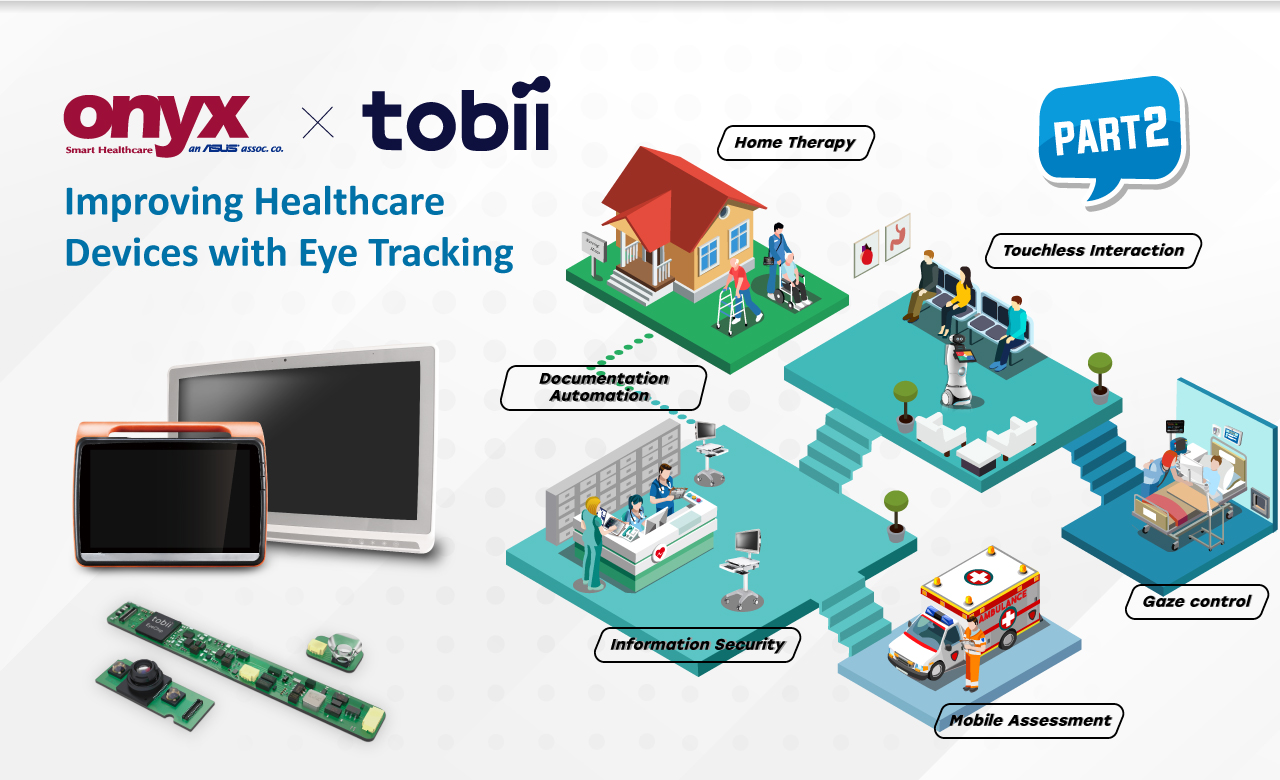Onyx + tobii: Improving Eye Tracking in Healthcare Devices (Part 2)
.jpg)
Tobii Tech and Onyx have collaborated for many years, working to broaden the use of assistive and health-assessment solutions by enabling them with eye tracking. Our joint effort continues to be highly valued, as we deepen our cooperation to deliver leading-edge eye tracking enabled healthcare systems, including the ongoing digitalization of operating rooms. By embedding eye tracking into a surgical console, for example, you can control it, as well as surgical robots and other equipment in the OR with your eye movements — reducing the number of peripherals that need to be handled, cleaned, and protected. Yet perhaps more important, using eye movements to control devices lowers the burden on the hands of clinical staff, maintaining workflow efficiency. Eye tracking enhances remote collaboration in surgical procedures by overlaying video feeds with the surgeon’s gaze. This additional information facilitates remote participation as it helps trainees to learn and off-site experts to advise. Through gaze-control, eye tracking provides patients with temporary or permanent disabilities with a means to interact with hospital infotainment systems, reducing staff workload and improving patient wellbeing.
Ulrica Wikström
VP Segment Head — Tobii Tech
https://tech.tobii.com
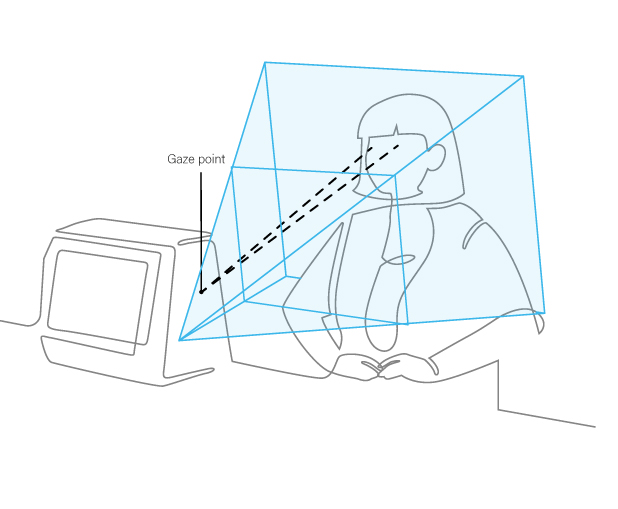
What is eye tracking?
Eye-tracking is a sensor technology that follows a person’s eye movements,
converting what they are looking at into a data stream. Eye-tracking components
deliver raw data to a functionally-separated processing unit, which in turn delivers
a data stream in real-time to a high-level application, such as a control system
for a surgical robot or hands-free navigation in medical information systems.
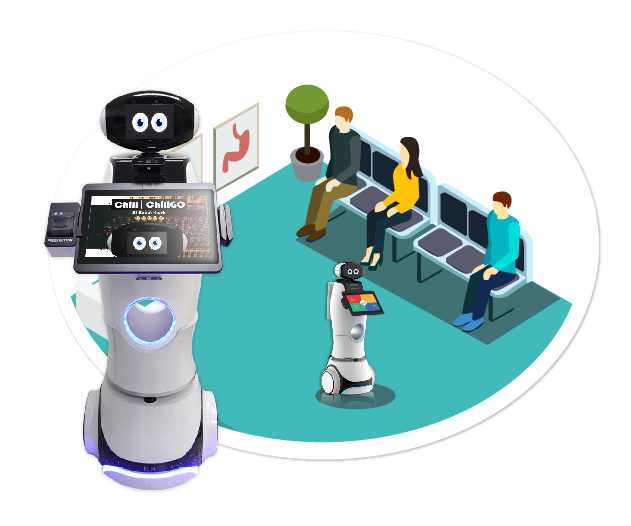
Onyx Mobile Robot with Eye Tracking:
Using vision to control self-service info-kiosks
Self-service is a cost-effective means to provide visitors and patients in hospitals
and clinics with services such as parking information, directions, and check-in/out.
As the world focuses on minimizing contact to prevent the spread of germs,
self-service promotes social distancing, prevents lines from forming through round-
the-clock availability, and reduces workload for administrative staff. Eye tracking
enables touchless interaction, reducing cleaning needs and fear of contamination,
and facilitates a range of useful interface functions, including power savings
through automatic sleep/wake based on presence. Eye tracking also compliments
technologies such as voice- and gesture-based activation that enable services
for people with disabilities.
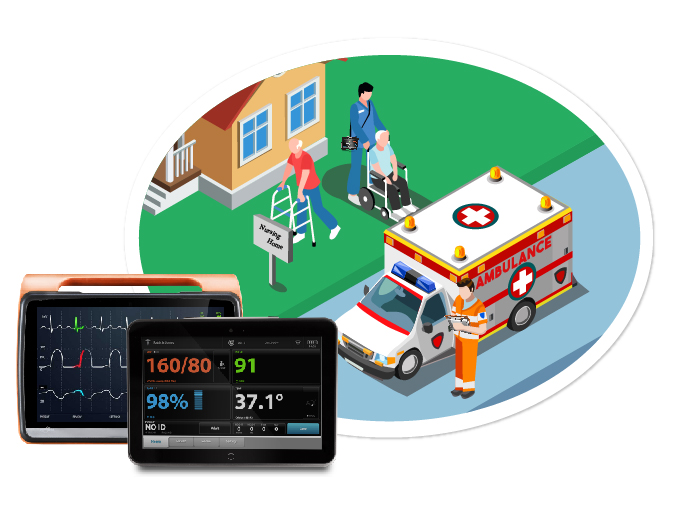
Onyx Mobile Tablet with Eye Tracking:
Delivering care in the home and in the field
Digital transformation, mobile networking, and the development of mobile healthcare
devices have led to a massive uptake in the development and use of telehealth
services and home therapy. The benefits of healthcare decentralization and
home-based monitoring capabilities are wide-reaching, providing convenient
access to many people living in remote locations and even in cities where
congestion can be prohibitive. The addition of eye tracking to self-monitoring and
mobile devices provides healthcare services with unbiased data-driven feedback,
crucial for follow-up and monitoring of patients with, for example,
neurodegenerative diseases. Eye tracking can enable mobile devices,
so that assessment can be carried out directly in the field and
at home, as well as in hospitals and clinics.
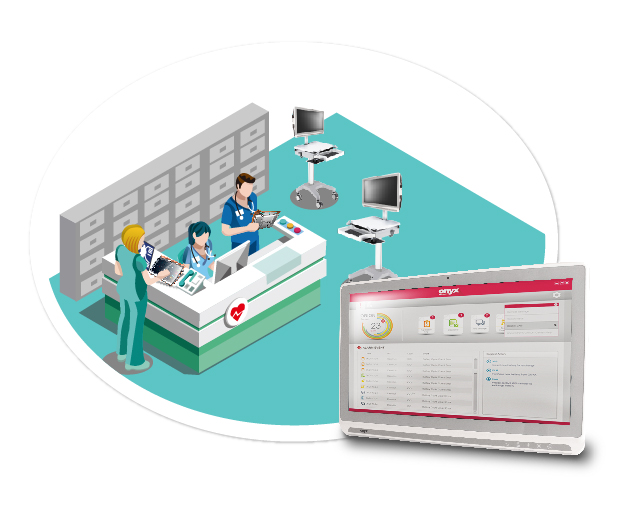
Onyx Mobile Cart Computer with Eye Tracking:
Facilitating clinical workflows and automating documentation
Mobile nursing stations facilitate clinical workflows by providing a comprehensive point-of-care solution that combines communication, medical supplies, and access to Record-keeping systems. Equipped with eye tracking sensor technology, the computer workstation can detect user presence and attention, which can be leveraged to uphold privacy and integrity. For example, eye tracking enables automatic screen blur when no user is present or when shoulder surfing is detected,
with rapid unblur and automatic logout for unauthenticated users. In addition to security features, eye tracking enables touchless interaction, reducing the spread of germs and lowering cleaning needs. The capability to interact with record-
keeping systems hands-free supports accurate and timely documentation of patient information, which can be automated.


